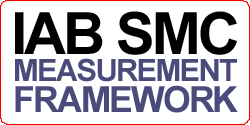By Iain MacMillan, RMM
Over on the RMM blog, we explained what Facebook Places was, how it worked and who might use it.
While that post looked at how Facebook’s users might use Places, we’ve also been thinking about what advantages the new feature offers brands – particularly over Foursquare.
Currently, Foursquare users get the benefit of social gaming through collecting badges, discounts from brands like Starbucks and a new kind of interaction with friends. Facebook currently offers only the last of these three options. It hasn’t stolen the mechanism of rewarding users through badges, nor has it benefited from a lucrative partnership like Starbucks offering Foursquare power users free coffee. But Facebook Places may have the sheer might needed to expose a brand to large, hitherto untapped networks of friends, colleagues and family.
Facebook has a ready-made user base
, Foursquare has 2.5 million users. Very impressive for a start-up but in hard numbers barely comparable to . With such a massive user base, it will be Facebook Places and not a single-serving start-up which pushes geo-location into the mainstream over the next few years. There is little incentive to add users to your Foursquare network when they can access your status updates publicly via Twitter. But Facebook is a closed network; Places provides a new way in for brands.
This means any brand reliant on a bricks-and-mortar location should be quick to claim their postcode on Facebook Places – the quicker the uptake, the more noticeable to users. More so than Foursquare, if a user checks into your Facebook Place it will display to a potentially massive network of prospective customers. Brands who have marked themselves on Places may find themselves as a meeting or talking point among large networks of friends who have tagged themselves and each other on check-in.
Places will affect your fan page
There’s an option for any brand with a Facebook fan page to ‘merge’ this with the new Places functionality. Doing so will update your page design to reflect a map of your location and – importantly – status updates of everyone who has checked in there, whether a fan of your page or not.
Unfortunately there’s a flaw –this doesn’t really work for any brand with multiple locations to map. The natural step from here would be to consider creating individual pages for individual stores; creating smaller but potentially more loyal communities around single locations and also driving footfall.
Facebook is brand-friendly
Out of all the mainstream social media platforms, Facebook is the most nakedly interested in making money out of its users – for better or worse. Its swift release of the Places advertiser guidelines, despite technical teething problems with the new feature, suggests Facebook is keen to broadcast Places as an opportunity for brands as much as users. It is very much in Facebook’s interest to ensure brands can exploit Places for commercial advantage more quickly, easily and cost-effectively than the rival Foursquare over the upcoming months – which is why, as a brand, it would be smart to keep an eye on it.


